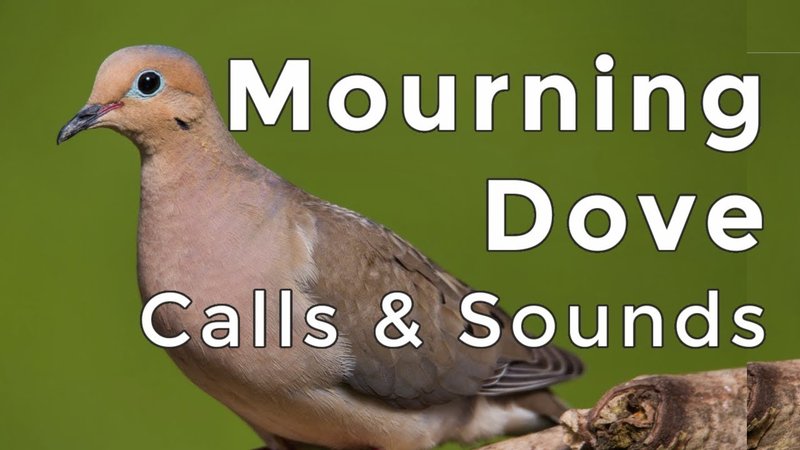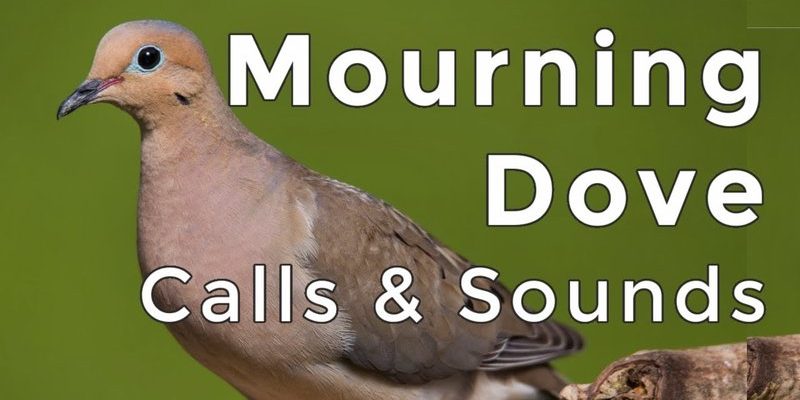
Dove vocalizations can be quite varied, and understanding these sounds can deepen your appreciation for these peaceful birds. Think of it as learning a new dialect; once you know the basics, everything starts to make sense. Now, let’s explore the different types of dove vocalizations and what they signify about their behavior and emotional state.
Understanding Dove Sounds
Dove vocalizations are mainly made up of coos, coos, and even some whistles. These sounds work like a bird’s version of texting and calling, helping them communicate with one another in their natural habitat. The most common sounds doves make include soft cooing, which you might hear early in the morning or late at night. Isn’t it fascinating how these simple sounds can convey so much?
When you listen closely to these sounds, remember that each tone and pitch carries a unique message. For instance, a low, soft coo can signal contentment, while sharper, more urgent coos might indicate distress or a call for help. Just like humans might raise their voices when excited or upset, doves adjust their sounds depending on what they want to communicate.
The Soft Coo: A Sign of Contentment
One of the most recognizable sounds from doves is their gentle cooing. Let’s take a closer look at the soft coo, which often indicates relaxation and comfort. Picture a dove perched on a branch, basking in the sun’s warmth, surrounded by friends. That serene cooing could be their way of saying, “Life is good!”
These soft coos are common during courtship rituals. A male dove, trying to impress a lady dove, might coo softly to let her know he’s not a threat and is ready to start a family. This is both a charming and essential part of their mating process. So, if you hear doves cooing softly, it’s likely a peaceful moment, signaling they’re happy and secure.
Short and Sharp Sounds: A Call for Attention
Now, let’s dive into the short and sharper sounds doves make. You might hear a few quick, staccato coos that seem to rise in urgency. Here’s the thing: these vocalizations serve a different purpose altogether. Imagine being at a party and suddenly hearing someone slip on the floor. The gasps and exclamations that follow are similar to what doves do when they need to get attention or alert others of potential danger.
These sounds can be a signal of alarm or distress, often used when a predator approaches or there’s a perceived threat in their territory. The sudden shift from soft cooing to sharper sounds indicates that something has changed in their environment. This sharp vocalization can help doves warn their flock, just like how we might shout out a warning in a crowded place.
Whistles and Chattering: The Playful Side
In addition to soft coos and sharp sounds, doves also produce a spectrum of whistles and chattering noises. These sounds can often be part of their playful behavior, especially when interacting with their mates or young ones. If you’ve ever seen doves taking a bath in a birdbath, you might notice how they chatter away, turning the tranquil moment into a joyful celebration.
These vocalizations can also emerge during courtship dances when males attempt to woo females with affectionate displays. The whistling can add a playful element to their interactions, showcasing not just communication but also a bonding experience. Isn’t it adorable how sounds indicate their feelings, much like human laughter or playful teasing?
Why Understanding Dove Vocalizations Matters
You might be wondering: why should we take the time to understand dove vocalizations? Well, knowing what these sounds mean can help us appreciate the beauty of nature and the animals we share our space with. By recognizing different vocalizations, we can better understand their behavior and even enhance our experiences when observing them.
This knowledge can also contribute to their conservation. If we understand how to recognize when doves feel threatened or distressed, we can take steps to provide a safer environment for them. For bird lovers and wildlife enthusiasts, this understanding can deepen the connections we feel with the natural world. It’s all about tuning into their “radio station” and getting the full story behind their sounds!
Comparing Dove Vocalizations with Other Birds
When learning about dove vocalizations, it helps to compare them with sounds made by other birds. For example, think about how a cardinal sings a melodious tune to attract a partner. While cardinals may use various notes to create complex melodies, doves tend to keep it simple and soothing. Their communication is often more straightforward, focusing on gentle coos and soft sounds rather than elaborate songs.
Other birds might use loud, attention-grabbing calls to establish territory, while doves often communicate in softer, more peaceful ways. This distinction not only defines their nature but also reflects their role in the ecosystem. Doves promote peace and calm, acting as gentle reminders of balance in their environments.
Final Thoughts on Dove Vocalizations
In a world filled with noise, dove vocalizations stand out as a beautiful reminder of nature’s simplicity and elegance. By understanding what these sounds mean, we can foster a deeper appreciation for these gentle creatures and their role in our ecosystem. Whether it’s the soft coos of contentment, sharp sounds of alarm, or playful whistles of interaction, each vocalization tells a story.
So, the next time you hear a dove cooing from a nearby tree, take a moment to listen closely. Remember, they’re not just making noise; they’re sharing a glimpse of their lives with you. In this way, you can feel a bit more connected to the world around you—one soft coo at a time.

